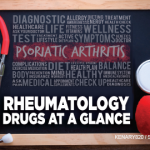(Reuters Health)—Companies fail to report roughly one in 10 serious and unexpected medication side effects to the U.S. Food and Drug Administration (FDA) within a 15-day window specified by federal regulations to protect patient safety, a study finds.
Drug manufacturers are also less likely to disclose serious adverse events within this window when patient deaths are involved than when complications aren’t fatal, according to an analysis of 1.6 million side effect reports to the FDA from 2004 to 2014.
“Timely reporting of adverse drug events is critical for ensuring patient safety,” said senior study author Pinar Karaca-Mandic, a researcher at the University of Minnesota School of Public Health in Minneapolis.
“Ours is the first study to empirically examine the extent of delays in reporting,” she told Reuters Health by email.
Under U.S. regulations, when drug manufacturers become aware of serious complications linked to patient deaths, hospitalizations, disabilities, birth defects or previously unknown side effects, they are supposed to disclose these issues to the FDA more quickly than they would for minor problems or complications already described on medication labels, the researchers note July 27 in JAMA Internal Medicine.
Karaca-Mandic and colleagues examined how many days passed from the time companies were told of serious side effects—usually by doctors—until they reported the problems to the FDA.
Overall, 160,383 serious adverse events, or 10% of reports, were not disclosed by companies within 15 days‚including nearly 40,500 reports involving patient deaths.
About 91% of the nonfatal complications were reported within 15 days, compared with 88% of cases involving patient deaths.
It’s possible that the study underestimates reporting delays, and that encouraging clinicians to report side effect directly to the FDA instead of to manufacturers might ease delays, the researchers suggest.
FDA spokesman Christopher Kelly declined to comment on the study, citing a lack of opportunity to review the findings.
While the delays aren’t surprising, the focus on the 15-day time limit doesn’t account for the labor-intensive process manufacturers face in verifying adverse events before submitting reports to the FDA, said Kenneth Getz, a researcher at the Center for the Study of Drug Development at Tufts University School of Medicine.
“There is no question that it is critical that manufacturers report adverse events, accurately attributed to their respective products, in a timely manner to ensure patient safety,” Getz, who wasn’t involved in the study, said by email.
But speed shouldn’t be prioritized over accuracy, he said.
“Inaccuracies may lead drug safety professionals to draw incorrect conclusions, manufacturers may be wrongly forced to suspend and withdraw medications and interventions, health professionals may mistakenly alter their clinical practices, and patients may be denied safe and effective treatments,” Getz said.
The FDA has the ability to suspend drug sales or withdraw approval for unsafe medications, a tool that might also be deployed when companies fail to report serious side effects in a timely fashion, Dr. Rita Redberg, editor of JAMA Internal Medicine, wrote in an editorial.
Doctors also need to disclose known side effects to patients, a step that’s often skipped when patients are being recruited for trials, a separate study in the journal points out.
About one third of FDA-approved drugs carry a black box warning, highlighting side effects that may be fatal or cause serious illness or disability.
At one medical center, researchers reviewed 57 protocols for studies of drugs carrying black box warnings. They found that for 36 of the studies (63%) patient consent forms didn’t include these warnings.
“Disclosure of risk of harm to human subjects is an essential function of the consent form,” senior study author Dr. Steven Belknap, a researcher at Northwestern University Feinberg School of Medicine, said by email. “We expect our findings will prompt a rapid and comprehensive response at a national level to determine the extent of the problem and to correct erroneous consent forms.”


